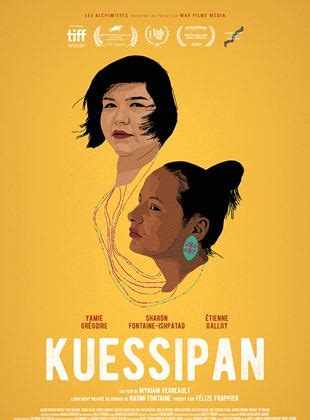Kuessipan

Description:
Kuessipan is a lyrical, intimate drama following two young Innu women in a remote Quebec community as they navigate friendship, love, and the pressure to conform. The film tracks their evolving bond as gossip, jealousy, and a life-changing choice ripple through families and the wider community. Directed with a patient, observational eye by Myriam Verreault, it blends naturalistic performances with stark, sunlit landscapes and a restrained, poetic pace to illuminate resilience, identity, and belonging in a modern Indigenous world.Keywords:
Tribal, Drama, Coming Of Age, Indigenous Cinema, Innu Culture, Quebec CinemaWhat is the meaning of Kuessipan?
"Kuessipan" is an Innu word that translates to "your turn" or "your turn to speak." The film, directed by Myriam Verreault, is a coming-of-age story that explores the lives of two Innu friends, showcasing their cultural identity and the challenges they face within their community. The title reflects the themes of voice, agency, and the importance of sharing personal experiences, emphasizing the desire for connection and understanding in their lives.
What is the book Kuessipan about?
"Kuessipan" is based on the novel by Naomi Fontaine, which explores the lives of two Innu friends, Mikuan and Shaniss, as they navigate the challenges of growing up in a small Indigenous community in Quebec. The story addresses themes of identity, friendship, and the impact of colonialism on Indigenous culture. Through their experiences, the narrative highlights the complexities of love, family, and the struggle to find one's place in a rapidly changing world, all while celebrating the richness of Innu traditions and language.
Where is Kuessipan located?
"Kuessipan" is set in the community of Uashat-Maliotenam, located near Sept-Îles in Quebec, Canada. The film explores the lives of two Innu friends, showcasing their experiences, cultural identity, and the challenges they face within their Indigenous community. The setting plays a crucial role in highlighting the themes of friendship, love, and the struggle for cultural preservation amidst contemporary issues.
Explore More Categories:
Urban Solitude Freedom Father Son Relationship Survival Alternate History Trust Alcoholism Monochrome Growing Up Consumerism Emotional Intensity Individualism Gore Youth Culture Arthouse Docudrama Mutant Northern Ireland Psychological Manipulation Radiation Pain Motherhood Claustrophobia Buddy Comedy Harassment